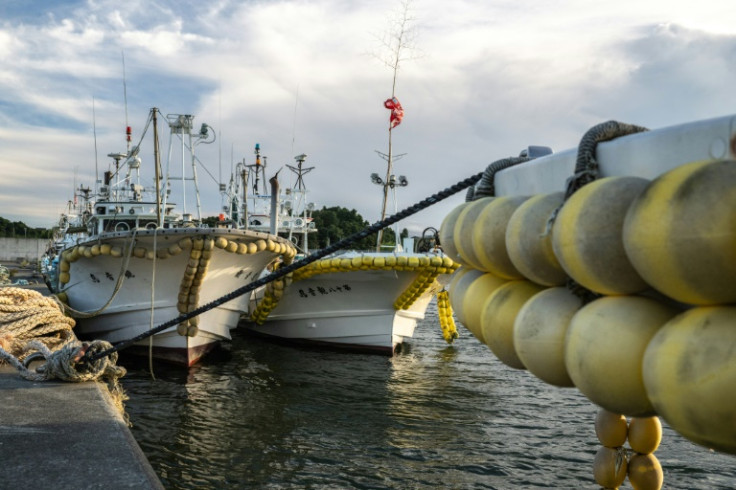Water Release Finds Little Support In Fukushima

Most Fukushima fishermen are tight-lipped but Haruo Ono can't keep his thoughts to himself on Japan's plans to release treated cooling water from the stricken nearby nuclear power plant into the Pacific from Thursday.
"Nothing about the water release is beneficial to us. There is no advantage for us. None. It's all detrimental," Ono, who lost his brother in the 2011 tsunami that crippled the plant, told AFP.
"Fishermen are 100 percent against," the 71-year-old said at his modest home in Shinchimachi, around 60 kilometres (40 miles) north of the nuclear plant in northeast Japan.
"The sea is where we work. We make a living off of the sea, we're at the mercy of the sea. So if we don't protect the sea, who would?"
Around 1.34 million tonnes of water, equivalent to more than 500 Olympic swimming pools, have accumulated at the Fukushima plant since the earthquake and tsunami that killed 18,000 people in 2011.
It has been contaminated by being used to cool the highly radioactive reactor cores that went into meltdown, combined with groundwater and rain.
But plant operator TEPCO says the water has been diluted and filtered to remove all radionuclides except tritium, which is far below dangerous levels.
The plan gradually to begin releasing the water at a maximum rate of 500,000 litres (132,000 US gallons) a day via a pipe one kilometre (half a mile) out to sea has won approval from the UN nuclear watchdog.
But many in the Japanese fishing industry are worried about the reputation of the country's seafood, just as it was starting to recover 12 years after the Fukushima disaster.
"Fukushima was seen as something people should avoid (after 2011). Even car number plates from Fukushima was taken off when people had to evacuate to other prefectures," local artist Tomomi Kodama, 40, told AFP.
"Now if the water is released from the plant, I am worried about how the world would possibly accept it," she said.
As well as being a major source of national pride, seafood is a major Japanese industry, with almost 600,000 tonnes -- worth around $2 billion -- exported in 2022.
China is its biggest customer, accounting for around a quarter of this, but Beijing has accused Tokyo of treating the ocean like a "sewer" with the water release.
In a move that experts say is partially motivated by rivalry in other areas, China even before the release banned food shipments from 10 Japanese prefectures and imposed radiation checks for elsewhere.
These time-consuming controls have already led to a 30-percent slump in Japanese seafood imports into China last month, Japanese and Chinese media reported, citing Chinese customs data.
Hong Kong, another important market for Japanese seafood exports, has also threatened restrictions, and it is unclear how consumers elsewhere will react.
Masanobu Sakamoto, head of Japan's national fisheries cooperative, reiterated on Monday his opposition to the move.
"(Scientific) safety doesn't necessarily equate to a feeling of security in society. There are concerns that the once the water is discharged, there will be reputational damage," he said.
"There is no way people in the fisheries industry can rest reassured," he said.
People in the fishing industry "really had a hard time in many aspects (after 2011). And now, after 12 years, they are finally settling down and moving toward happiness -- gradually," said Ono, whose three sons are also fishermen.
"What the government is doing now is to abandon Fukushima. What the government should truly protect is the people of Fukushima, the fishermen, not TEPCO," he said.


© Copyright AFP 2024. All rights reserved.





















